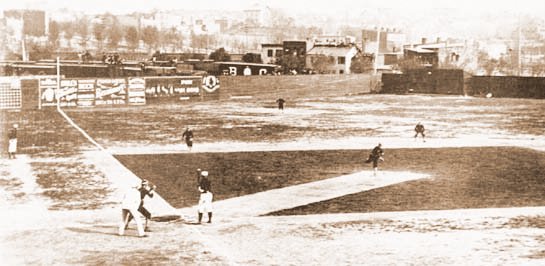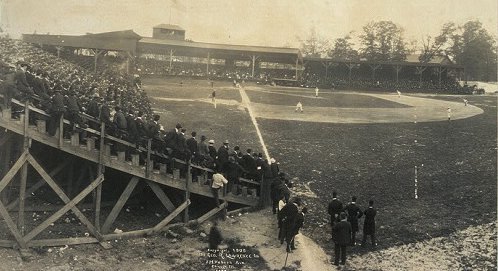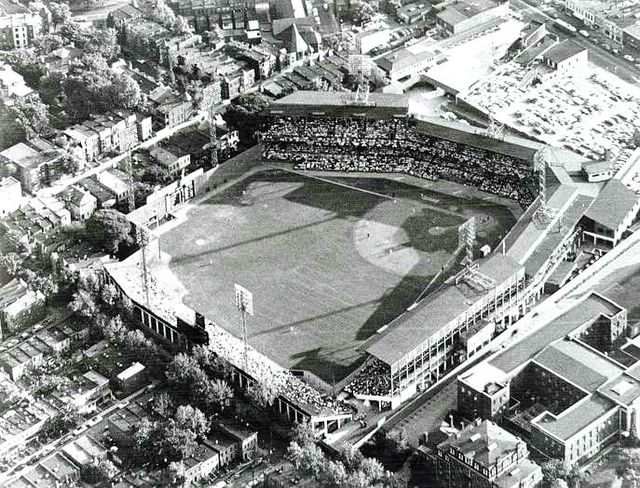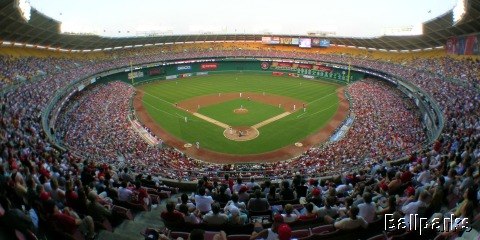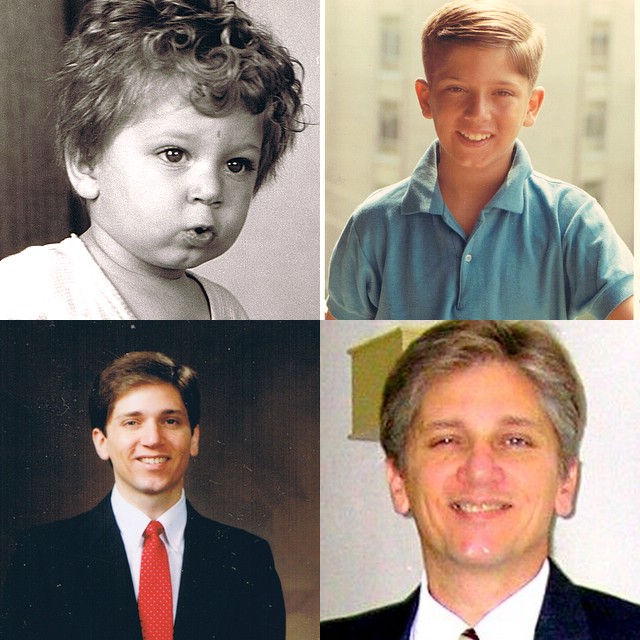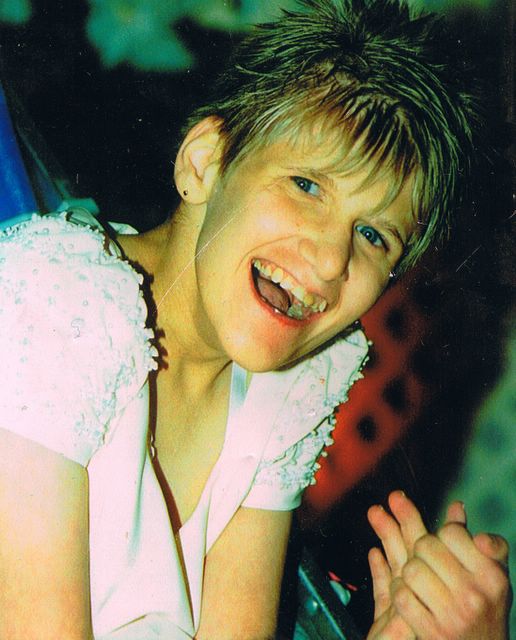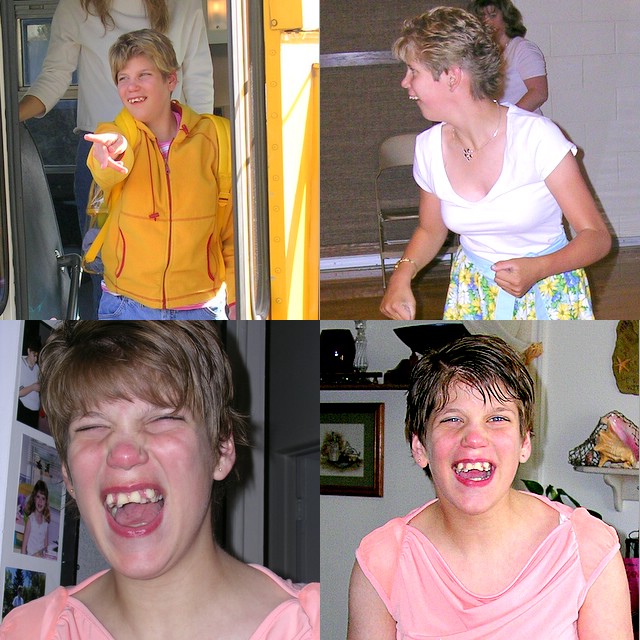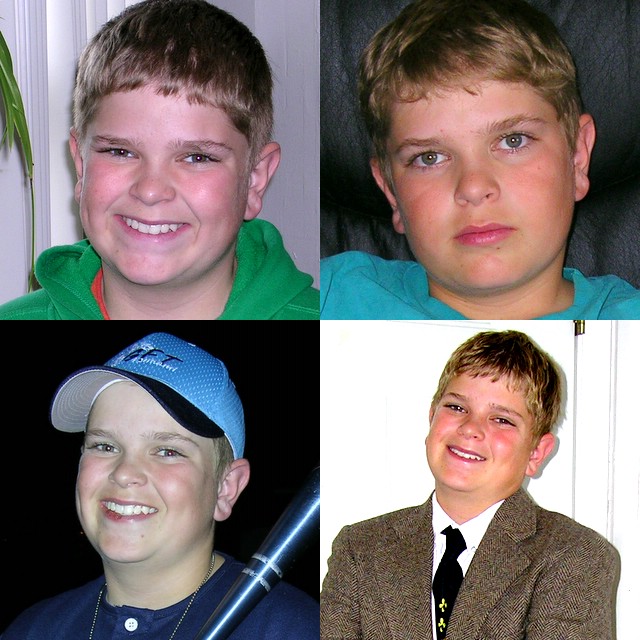Desperate Times Call For Desperate Measures
 [November 30th] - It looks like the Washington Nationals will lose all of their free agents this off-season while being unable to make any substantive offers to the free agents from other teams. With the loss of Esteban Loiaza to the Oakland Athletics, and the likely loss of Hector Carrasco and Joey Eischen, the team finds itself in dire need of pitching. The problem they face is that they have no surplus minor leaguers to trade away. That leaves only their major league roster to tinker with. The only hope the Nats have is to trade some of their front-line players and hope that their backups can do an adequate job of replacing them.
[November 30th] - It looks like the Washington Nationals will lose all of their free agents this off-season while being unable to make any substantive offers to the free agents from other teams. With the loss of Esteban Loiaza to the Oakland Athletics, and the likely loss of Hector Carrasco and Joey Eischen, the team finds itself in dire need of pitching. The problem they face is that they have no surplus minor leaguers to trade away. That leaves only their major league roster to tinker with. The only hope the Nats have is to trade some of their front-line players and hope that their backups can do an adequate job of replacing them.
Enter Ryan Church.
Church is one of the few players Washington has who is coveted by other teams and could bring a quality pitcher in return. Left field could then be manned by the tag-team of Terrmel Sledge and Marlon Byrd.
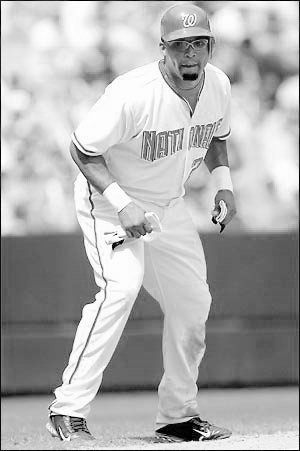 Sledge is coming off a hamstring injury that forced him to miss all but just a handful of games in 2005. He had a good rookie year in 2004, hitting .267-15-62 in 435 at bats with Montreal. He had a .352 obp and a .489 slugging average. In a platoon, Sledge would bat against righties. In 2004, he batted .277 with 13 homers and 46 rbi's against them. Against right-handers, he had a good home run ratio of one every 23 at-bats.
Sledge is coming off a hamstring injury that forced him to miss all but just a handful of games in 2005. He had a good rookie year in 2004, hitting .267-15-62 in 435 at bats with Montreal. He had a .352 obp and a .489 slugging average. In a platoon, Sledge would bat against righties. In 2004, he batted .277 with 13 homers and 46 rbi's against them. Against right-handers, he had a good home run ratio of one every 23 at-bats.
Marlon Byrd came to the Nats in a trade that sent Endy Chavez to the Phillies. He began the season well, spraying singles and playing good defense. After his average began to dip, however, he was sent to New Orleans with the admonition, "Learn how to hit with power." He listened, he learned, and kept his attitude positive. He was back with the team a month later, and began driving the ball for the first time in his career. Against lefties, Byrd hit .323 and had an on base percent of .369 while slugging at a .462 clip. Team GM Jim Bowden believes that Byrd can start and hit 20-25 homers over a full season.
Neither player could replace Ryan Church in left field, but together, they have the potential to outperform him. Based on their 2005 numbers, the two players could produce a combined .285-26-85 type season with a .365 on base percentage and a .470 slugging average. I don't think that Ryan Church is capable of those numbers at this point in his career.
By trading Church [and a couple of situational players], the Nationals could receive a quality starting pitcher and use existing players to replace him in left field. I'd hate to lose Church. My guess is he'll h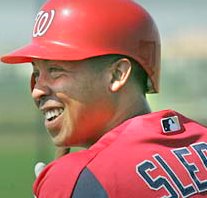 ave a career similar to former Expo and current Indian Grady Sizemore, who hit .289-21-87 in 2005. But we have the spare parts to replace him, and the team is in desperate need for another quality starting pitcher.
ave a career similar to former Expo and current Indian Grady Sizemore, who hit .289-21-87 in 2005. But we have the spare parts to replace him, and the team is in desperate need for another quality starting pitcher.
This is the type of deal that can get done in spring training, when [God willing] the team will finally have an owner, a general manager who wants to run the team, and a stadium with blue prints approved by the minions on both sides of the bargaining table.
I'd e-mail Bowden and suggest this trade, but he's probably wearing his "red sox" tonight. Nats. Um, I mean nuts.
They Will Build It, And We Will Come
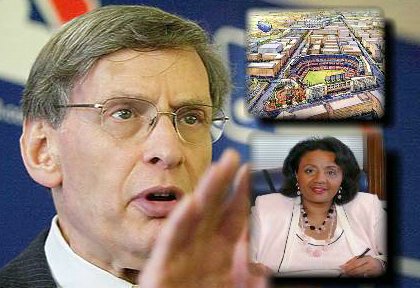 [November 29th] -- If the relationship between Major League Baseball and the D.C. City Council were a movie, it would be "The Odd Couple" and not "Runaway Bride." Too much is at stake for either side to "pick up their marbles" and go home.
[November 29th] -- If the relationship between Major League Baseball and the D.C. City Council were a movie, it would be "The Odd Couple" and not "Runaway Bride." Too much is at stake for either side to "pick up their marbles" and go home.
In the last 24 hours, we've heard that Selig was going to pay the city for the $20 million worth of upgrades for their VIP parking lot. Then we heard that baseball had made no such agreement. Then one of the D.C. councilman said that unless baseball was ready to "ante up" additional funds, the stadium deal was pretty much "dead." later in the day, another councilman said that "a deal is a deal," and that the city had no choice but to go ahead with what they committed to. Bud Selig says that without a stadium agreement in place, baseball won't name an owner. The City Council says that they want an owner named before finalizing the stadium agreement.
Doesn't all this sound very familiar?
Following the announcement that the Expos were moving to Washington last fall, both sides began a process of "oneupsmanship" where each group flexed their muscles and made threats they had no intention of following through on. Linda Cropp was going to demand that 50% of the stadium be paid for with private funds. In response, Selig halted all D.C. marketing and ticket sales, and began talking to other cities about taking in the Expos. Ultimately, the spitting contest ended where it began, with D.C. paying for the ballpark.
I expect that when this latest round of chest-pounding ends, both sides will be back where they were at the beginning. The city will pay for most of the stadium, and baseball will cover a little bit of this and a wee bit of that. Each side will claim victory, and sooner or later, probably, later, the stadium will be built. Oh sure, it's now likely that it'll be built "on the cheap," like Cincinnati's new park which had to deal with similar cost over-runs. But it will be built.
And all of this will be a faint memory, long ago forgotten and forgiven. Go Nats.
Esteban Rides Into The Sunset, Says "Thanks For The Memories"
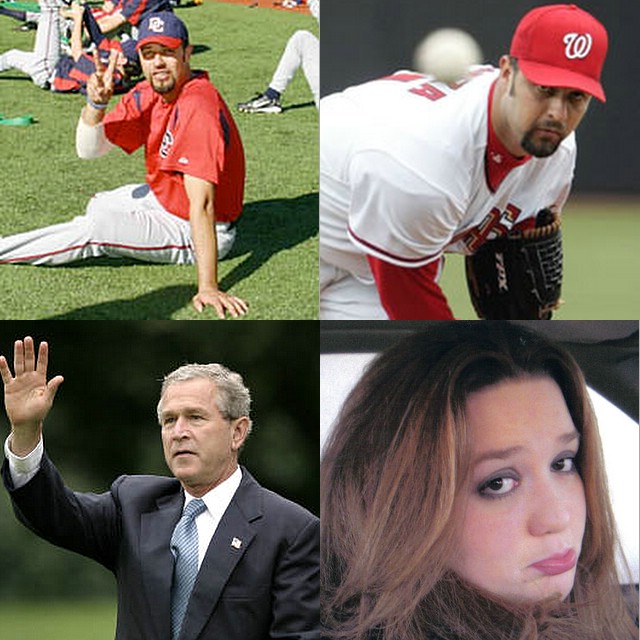 [November 27th] -- It's begun.
[November 27th] -- It's begun.
Esteban Loiaza signed a three year, $21,735,000 contract with the Oakland Athletics on Monday.
Loiaza will get a $3 million dollar signing bonus with the remaining contract dollars spread out through the 2008 season. The Nationals final offer was no different from their first: Two years, $8 million dollars.
Loiaza went 12-10, 3.77 in his only season with the Washington Nationals. The Nats, with one of the smallest payrolls in major league baseball, were able to sign Loiaza because no one else wanted him. The two sides reached agreement on a one year, $2.9 million dollar contract because his 2004 season, which began with the White Sox and ended in the bullpen of the New York Yankees, was perhaps the worst of his career. A year earlier, he won 21 games and crafted a sharp 2.90 ERA. Most teams thought he would never again be a competitive hurler in the bigs. He wasn't able to find a team willing to sign him until January 29th, just a few days before spring training started.
At first blush, it seems that Loiaza's loss is a direct result of the Nationals having no ownership in place to c ounter the Athletics' offer. But when you think about it, why would the Nats really want to pay him that kind of money? Loiaza is going to make $7.2 million a year with the Athletics. He is going to be 35 by the end of the contract. He has a career 4.60 ERA. He is little more than a career .500 pitcher, a good middle to back-of-the rotation starter. Loiaza did a good job for the Nats, but isn't worth anywhere near $7 million a year. The Athletics, as the Blue Jays did with B.J. Ryan, grossly overpaid to secure a good, but not great pitcher.
ounter the Athletics' offer. But when you think about it, why would the Nats really want to pay him that kind of money? Loiaza is going to make $7.2 million a year with the Athletics. He is going to be 35 by the end of the contract. He has a career 4.60 ERA. He is little more than a career .500 pitcher, a good middle to back-of-the rotation starter. Loiaza did a good job for the Nats, but isn't worth anywhere near $7 million a year. The Athletics, as the Blue Jays did with B.J. Ryan, grossly overpaid to secure a good, but not great pitcher.
The Nationals have a couple of young pitchers who seem ready to take Loiaza's place in the starting rotation. Jon Rauch, and Jason Bergman both pitched effectively in 2005, and both have the "stuff" to be effective pitchers. Rauch went 2-4 with a 3.60 ERA and Bergman was 2-0 with a 2.75 ERA.
Loiaza is a type "A" free agent, which gives the Nationals compensation for th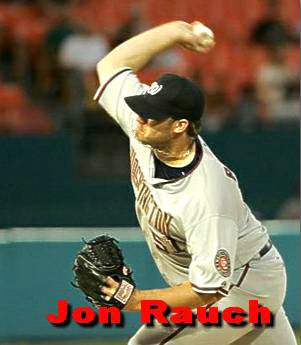 eir free-agent loss. The team will gain a second first-round draft pick in the 2006 amateur draft. They will now have both their own #15 selection as well as the Athletics' #18 pick next season. One only has to look at the impact of Ryan Zimmerman in 2005 to see the benefit of having a second high-round draft pick next year.
eir free-agent loss. The team will gain a second first-round draft pick in the 2006 amateur draft. They will now have both their own #15 selection as well as the Athletics' #18 pick next season. One only has to look at the impact of Ryan Zimmerman in 2005 to see the benefit of having a second high-round draft pick next year.
I have fond memories of Esteban, but there is no way the Nationals could afford to tie up 15% of the current payroll on a 33 year old pitcher with a decidedly "up and down" career record.
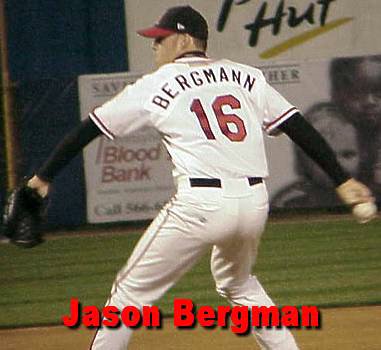 I hope he does well for Oakland, and I am confident that Rauch and/or Bergman will fill his spot in the rotation without missing a beat.
I hope he does well for Oakland, and I am confident that Rauch and/or Bergman will fill his spot in the rotation without missing a beat.
Things aren't looking particularly hopeful on the Hector Carrasco front either. When asked about the Nationals retaining the 35 year old righthander, Bowden would only say, "We continue to have dialog [with Carrasco]. I spoke to his agent, Adam Katz, a couple of days ago. We'll see."
Jim Bowden's $4 million per year offer was "spot on." That is exactly what Loiaza is worth. It's the Athletics, and not the Nationals who have to worry about the "dollars and sense" of the Loiaza deal. Jay Bergman and Jon Rauch must be warming up their arms as we speak.
Wily Mo's "Play me, Trade Me" Demand Music To Bowden's Ears
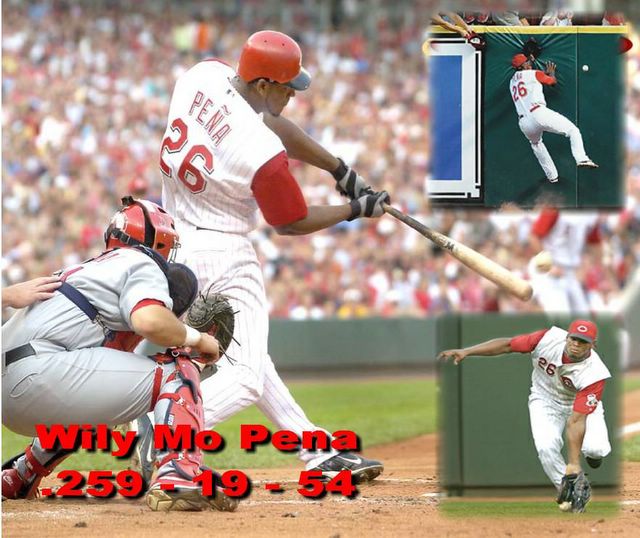 [November 26th] -- What's more crowded than the Beltway at rush-hour? The Cincinnati Reds outfield. Well, I guess that's a slight exaggeration, but to the Reds outfielders, it must feel that way sometimes. A combination of Ken Griffey Jr.'s ongoing injury problems along with several young players all blossoming at the same time has made playing time very hard to come by for Wily Mo Pena, Austin Kearns and Ryan Freel. Adam Dunn and Ken Griffey Jr. (when healthy) hold down two of the three outfield positions, leaving three players to battle for the final position.
[November 26th] -- What's more crowded than the Beltway at rush-hour? The Cincinnati Reds outfield. Well, I guess that's a slight exaggeration, but to the Reds outfielders, it must feel that way sometimes. A combination of Ken Griffey Jr.'s ongoing injury problems along with several young players all blossoming at the same time has made playing time very hard to come by for Wily Mo Pena, Austin Kearns and Ryan Freel. Adam Dunn and Ken Griffey Jr. (when healthy) hold down two of the three outfield positions, leaving three players to battle for the final position.
That just won't work.
Wily Mo Pena, the subject of trade rumors for three seasons, has had enough. He wants to start, or he wants out. "The best thing they (the Reds) can do is to play me or trade me because I no longer want to be on the bench," said the 23 year old from his home in the Dominican Republic. He spent part of the 2005 season injured, limiting him to 99 games. He batted .254 with 19 home runs and 54 rbi's. Up until now, Pena accepted his role as a bench player. But no more.
Pena came out of nowhere in 2004, hitting 26 homers in only 336 at bats. Pena is like Brad Wilkerson in that he has a high strikeout total to go along with a low batting average. But, unlike Wilkerson, Pena has real power. But when he's not hitting home runs, he's not getting on base either as his lifetime .303 on base percentage would indicate.
Nationals' general manager Jim Bowden must have called the Reds moments after hearing of Pena's remarks. He traded Drew Henson to the Yankees to acquire Pena. He's always liked his talent and has had talks with Cincinnati since joining the Nationals about the possibility of trading for him.
Do the Nationals need Wily Mo Pena? Do they really want him? If Brad Wilkerson is traded for a lead-off hitter, than sure, Pena's power could help the team. But there is no way that the Nationals can win with both Wilkerson and Pena in the outfield.
That said, Bowden has done stranger things. But he really, really likes Wily Mo Pena.
B.J. Ryan Jilts Orioles For Jays, Turns Free Agent Market On It's Ear
 [November 26th] -- B.J. Ryan is now a Blue Jay, and a very rich one at that. Ryan, who has been with the Baltimore Orioles since 1999, signed a five year contract worth nearly $10 million per season [there are differing reports as to the contract's exact value]. Ryan is now the highest paid relief pitcher in major league history, topping Mariano Rivera's 2001 Yankee contract.
[November 26th] -- B.J. Ryan is now a Blue Jay, and a very rich one at that. Ryan, who has been with the Baltimore Orioles since 1999, signed a five year contract worth nearly $10 million per season [there are differing reports as to the contract's exact value]. Ryan is now the highest paid relief pitcher in major league history, topping Mariano Rivera's 2001 Yankee contract.
I guess the question that begs to be asked is, why? Does anyone believe that Ryan is anywhere near the pitcher that Rivera is?
Ryan, 29, went 1-4 in 2005 with an ERA of 2.43. He saved 36 games in his first season as a closer. Prior to last season, he was a middle relief and set-up guy with a career record of 16-19 and a 3.54 ERA.
Ryan's career is a tale of two halves. Prior to 2003, he had an career ERA of 4.86. It was in the last three seasons that he was able to refine his pitching abilities and become a quality force out of the Oriole bullpen. He has a 2.76 ERA since 2003. Ryan is a strikeout pitcher, fanning 465 batters in just 381 innings.
So, let me see if I get this right.
The Toronto Blue Jays are going to pay Ryan almost $10 million dollars a year based on three good seasons? How can this kind of contract be justified? More important ly, the Blue Jays have raised the financial bar for the rest of the free-agent class of 2005.
ly, the Blue Jays have raised the financial bar for the rest of the free-agent class of 2005.
Closer to home, if B.J. Ryan gets A.J. Burnett-type money, what kind of contract will Esteban Loiaza and Hector Carrasco be looking for? Surely most of the free-agent pitchers that the Nationals were hoping to sign are now out of the team's price range thanks to the Blue Jays.
Each year, there is one free-agent signing that the baseball community can point to and say, "What were they thinking?" For 2005, it's the Toronto Blue Jays' and their signing of B.J. Ryan. Is any pitcher really worth what they paid Ryan, which works out to a little more than $142,000 per inning pitched based on his 2005 stats? The Nationals' Livan Hernandez, on the other hand, earned a little less than $32,000 per inning pitched last season. Is Ryan worth more than four times more than Hernandez? No way.
Thanks Blue Jays. You're the new Texas Rangers.
Pierre Pressure
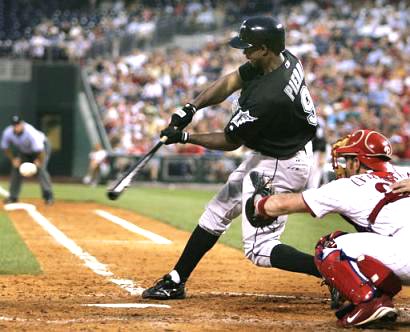 [November 25th] -- Nationals' fans have known that this day was coming for quite some time, and that there was little they could do to stop it. Bud Selig has seen to that.
[November 25th] -- Nationals' fans have known that this day was coming for quite some time, and that there was little they could do to stop it. Bud Selig has seen to that.
Until now, not having an ownership team in place, not having a general manager committed to the franchise, and not having a defined payroll limit hasn't really hurt the team to any great extent because the players who have been available thus far weren't a good fit for the team. With the Florida fire sale in full swing, however, the team's best chance to land a major league quality leadoff hitter is dwindling quickly.
The Boston Red Sox acquired Josh Beckett and Mike Lowell for a couple of minor leaguers. The Mets snagged Carlos Delgado from the Marlins for the D.C. equivalent of Ryan Zimmerman and Mike Hinkley. The Nationals couldn't have afforded Beckett or Delgado, but Juan Pierre's $3,700,000 salary would certainly fit nicely into the Nationals' payroll structure.
There are many different scenarios that could have brought Pierre to Washington. A straight-up Pierre for Brad Wilkerson would be my personal favorite, moving a player with a similar salary who has shown in five major league seasons that he will always be a low average, high strikeout player with medium power. The 28 year old Pierre has a career .305 average and has averaged 52 stolen bases over the last five seasons. Yes, his career .355 on base percentage is lower than Wilkerson's .365, but his presence in the D.C. lineup would drastically change the way the team plays the game of baseball.
Of course, all this is moot, because many other teams, the Chicago Cubs in particular, are actively talking trade with the Florida Marlins in the hopes of acquiring the fleet-footed center fielder. Washington, however, remains on the sidelines. The Nationals don't have an owner. The Nationals general manager is starry-eyed at the prospect of being the next Theo Epstein.
 The Nationals payroll is an unknown quantity -- the team isn't sure they could afford Pierre should they be able to make a trade.
The Nationals payroll is an unknown quantity -- the team isn't sure they could afford Pierre should they be able to make a trade.
The Bud Selig - D.C. City Council fight is about to have its first casualty. Juan Pierre would have been a great acquisition and could have made a real difference in the way Frank Robinson managed the team. The team would not have been forced to play station-to-station ball -- Robinson could have taken some chances with a greater expectation of success. As is stands, now, the Nationals will go into 2006 with Brad Wilkerson continuing to hold down the lead-off spot.
Thanks, Bud.
Does It Bother Any One Else That ....
 [November 23rd] -- I'm just curious --- does it bother anyone else that the folks at Major League Baseball haven't bothered to change the logo banner on the team's "official" website?
[November 23rd] -- I'm just curious --- does it bother anyone else that the folks at Major League Baseball haven't bothered to change the logo banner on the team's "official" website?
As of Thanksgiving day, the Nationals site still features photographs of players wearing Expos' uniforms. Oh sure, they've been cropped and colored to make it less obvious, but they are Expos players nonetheless. It's been nine months since the team first donned Nationals togs, yet thousands and thousands of fans point their browsers toward dcbaseball.com every day, and low and behold, right there in front of the Nation's Capitol are three players representing a foreign city.
For goodness sake, the team has already had a uniform change and still Bud and the boys won't update the website.
It's a Nationals disgrace, alright.
The Player In The Patch
 [November 23rd] -- In 1968, then baseball commissioner Bowie Kuhn commissioned a graphic artist to design a patch to be worn on the sleeve of all major league teams in 1969. The patch was to commemerate the 100th anniversary of major league baseball. The artist wasn't happy with the look of the baseball player depicted on the original patch. That changed when he happened to see a photo of a player who "looked like major league baesball." He used this player's likeness on the final design, pictured above.
[November 23rd] -- In 1968, then baseball commissioner Bowie Kuhn commissioned a graphic artist to design a patch to be worn on the sleeve of all major league teams in 1969. The patch was to commemerate the 100th anniversary of major league baseball. The artist wasn't happy with the look of the baseball player depicted on the original patch. That changed when he happened to see a photo of a player who "looked like major league baesball." He used this player's likeness on the final design, pictured above.
Who was the player? He's a former Washington Senator. Click here to find out the identity of the player on the patch.
Marlins Restock; Mets Lock-n-Load
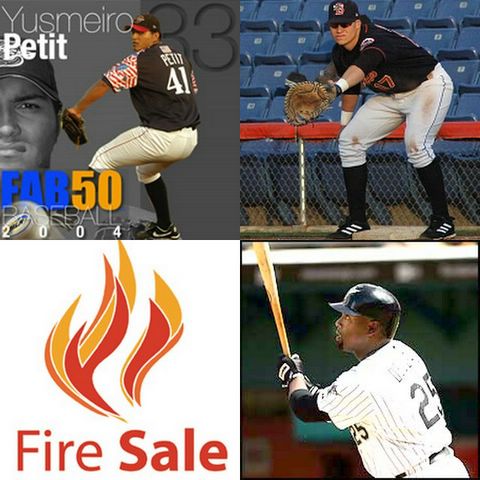 [November 23rd] -- The Florida Marlins announced Tuesday that they will likely be leaving South Florida following the 2008 season, and on Wednesday continued their "fire sale" as they reached an agreement to trade Carlos Delgado to the New York Mets. In return, the Marlins will receive pitcher Yusmeiro Petit and first baseman Mike Jacobs.
[November 23rd] -- The Florida Marlins announced Tuesday that they will likely be leaving South Florida following the 2008 season, and on Wednesday continued their "fire sale" as they reached an agreement to trade Carlos Delgado to the New York Mets. In return, the Marlins will receive pitcher Yusmeiro Petit and first baseman Mike Jacobs.
This is not the same type of house-cleaning that saw the Marlins cull much of their team's talent following their first World Series victory in 1997. This time, the Marlins have a plan, and a very good one at that. They are cutting payroll in anticipation of reduced fan support as they begin the process of [possibly] moving the team while restocking the roster with young, talented and potentially super-star players. By the time the team begins play in 2009, the Marlins [or whatever the team name will be] will probably have a new city, a new stadium and a roster blossoming with future stars. And what of the Mets?
 It seems that Omar Minaya is doing to the Mets what he did to the Expos. Remember, Minaya is the former Expos/Nationals general manager who traded away Grady Sizemore [.289-22-81 with Cleveland], Cliff Lee [18-5, 3.79 with Cleveland], Chris Young [12-7, 4.21 with Texas] and Jason Bay [.306-32-101 with Pittsburgh] and received in return no player that remains with the Nationals today. Can you imagine the kind of year the Nationals would have had in 2005 with those four players still on the roster? Minaya has shown a penchant for trading quality young talent for older, established players. He's done it again.
It seems that Omar Minaya is doing to the Mets what he did to the Expos. Remember, Minaya is the former Expos/Nationals general manager who traded away Grady Sizemore [.289-22-81 with Cleveland], Cliff Lee [18-5, 3.79 with Cleveland], Chris Young [12-7, 4.21 with Texas] and Jason Bay [.306-32-101 with Pittsburgh] and received in return no player that remains with the Nationals today. Can you imagine the kind of year the Nationals would have had in 2005 with those four players still on the roster? Minaya has shown a penchant for trading quality young talent for older, established players. He's done it again.
Carlos Delgado will take over first base for the Mets, replacing the departed Mike Jacobs. Delgado is 33 years old [though some websites list him as 32] and has already begun his age-driven offensive decline. He came to the major leagues with Toronto in 1993 and has remained one of the game's consistent power hitters. From 1998 through 2003, Delgado averaged 38 home runs and 121 rbi's. However, he managed only 32 homers with Toronto in 2004 and 33 with Florida last year [In fairness, Delgado did play in fewer games].
Delgado will bring a weak glove to Shea along with his potent bat. He made 14 errors in 2005 and has averaged nearly 13 miscues a season over his career. He has poor range and doesn't make the throw to second base very well. In comparison, the Nationals' Nick Johnson made only 5 errors last year.
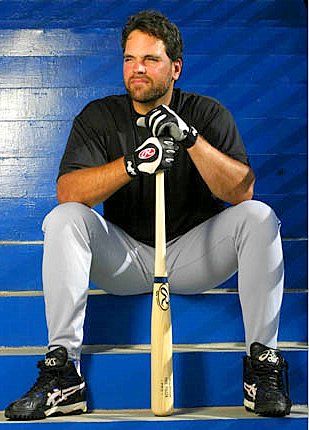 Delgado will likely produce as expected for another season or two before his aging skills make him little more than another overpaid veteran. Like Mike Piazza. And we all know how difficult it was for both Piazza and the Mets the past few seasons as his salary began to greatly overshadow his ability.
Delgado will likely produce as expected for another season or two before his aging skills make him little more than another overpaid veteran. Like Mike Piazza. And we all know how difficult it was for both Piazza and the Mets the past few seasons as his salary began to greatly overshadow his ability.
Mike Jacobs' career is heading in the opposite direction. The 25 year old began 2005 with "AA" Binghamton of the Eastern League. Prior to his August call-up, the sweet-swinging lefty hit .321 with 23 homers and 93 rbi's with a .376 on base percentage and a .589 slugging average, earning him the title of Mets minor league "Player Of The Year" for the second time in three seasons. In 100 at bats with the Mets, he did almost as well, going .310-11-23 with a .375 obp & .710 slg. In a 500 at bat season, the youngster would have been on pace to hit .310-55-115. Jacobs will likely be a star in the big leagues for the next decade.
Yusmeiro Petit, only 21, was listed #33 on the top 50 minor league prospect list. He was signed by the Mets as an undrafted player in 2001. He blossomed in 2004 with the Capital City Bombers in the South Atlantic League, crafting a 7-1 record with a 2.14 ERA. He struck out 117 in just 101 innings and showed the beginnings of his Maddux-like control, walking only 20. He spent most of 2005 baffling the competition in the Eastern League. He started 21 games, going 9-3 with a 2.91 ERA. In 117 innings, he struck out an astounding 130 batters while walking only 18. He got beat up a bit in an August call-up to 'AAA' Norfolk, but still showed some overpowering stuff, striking out 14 in 14 innings.
 Omar Minaya is again mortgaging a team's future for the present. Mets fans' will come to view Mike Jacobs and Yusmeiro Petit the same way Nats' fans look at Jason Bay and Cliff Lee. In five years, Delgado will either be out of baseball entirely or, like Mike Piazza before him, will be "hanging on" for the sake of a paycheck. In return, the Marlins will have a first baseman who is in the prime of his career and a pitcher who will continue to win 15-20 games a year for another decade.
Omar Minaya is again mortgaging a team's future for the present. Mets fans' will come to view Mike Jacobs and Yusmeiro Petit the same way Nats' fans look at Jason Bay and Cliff Lee. In five years, Delgado will either be out of baseball entirely or, like Mike Piazza before him, will be "hanging on" for the sake of a paycheck. In return, the Marlins will have a first baseman who is in the prime of his career and a pitcher who will continue to win 15-20 games a year for another decade.
Minaya isn't finished. He's now going after Billy Wagner and might even pry away Manny Ramirez from the Red Sox. But we all have learned that in baseball, a team of stars seldom succeeds. Just ask the Chicago White Sox. Minaya has also made the Mets much older. The starting position players now average more than 28 years of age, and the average age of the pitching rotation is 34. The Mets are not a team, but rather a compilation of spare parts unable to bring a championship to New York.
I am more concerned with the Marlins than I am the Mets. The Marlins will be young and talented and able to beat any of their NL East rivals on any given day. When those young players mature, I hope the team will be playing somewhere far away from the Nationals and in someone else's division. They are going to be a great team. And the Mets? Well, like the Nationals, their best players will be playing for other teams.
Thank you, Omar Minaya.
Trawling The NL East For Answers
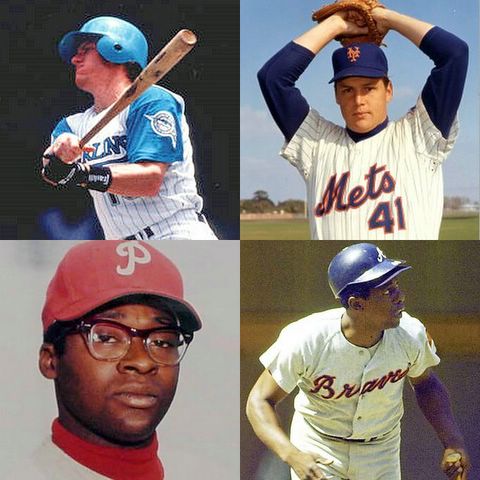 [November 22nd] -- How well the Washington Nationals do next season in the NL East depends just as much on what the other four teams do [or don't do] as do the moves that happen in the D.C. front office. It's early, but let's take a look at the comings and goings within the division and see whose doing what.
[November 22nd] -- How well the Washington Nationals do next season in the NL East depends just as much on what the other four teams do [or don't do] as do the moves that happen in the D.C. front office. It's early, but let's take a look at the comings and goings within the division and see whose doing what.
Florida Marlins:
Philadelphia Phillies: The Phillies won 88 games last year [4th best in 2005]. Their payroll was $95 million [second highest in the NL], and they averaged 33,316 at their still new park [9th best]. The Phillies are proof that throwing money at high-profile free agents don't win pennants. They would love to move first baseman Jim Thome but there are few teams able to afford his salary. They are likely to lose their ace closer, Billy Wagner, to free agency. For now, the team fields seven quality major league players. The exceptions are David Bell at 3rd base and Endy Chavez in centerfield [how did that happen?]. They have a solid starting rotation. The Phillies could easily win 85-95 wins in 2006, depending on who is closing for the team.
Atlanta Braves: The 900 pound gorilla continues to scare the pants off of the rest of the National League East. Most teams transition from a veteran to a young team over years; the Braves did it in less than a month. If the young kids, Jeff Francoeur, Ryan Langerhans, Brian McCann and Jorge Sosa and the rest, continue to grow, The Braves will continue to dominate the NL East. Look closely however, and you begin to see the cracks in the team's foundation. The Braves no longer have a Yankee-type payroll. In 2005, their 90 wins [2nd best in the NL] came at a cost of $85 million [6th highest]. Their attendance continues to drop each year, falling to a decade low 31,000 last season [11th in the NL]. Braves' fans have become complacent. Watching their team win the NL East means nothing any more. Rafael Furcal will likely depart. So will Farnsworth. At first blush, the $85 million payroll seems like enough to keep the Braves on track to win their 15th consecutive championship. The problem for the Braves lies in the distribution of those dollars. Salaries for three players, Chipper Jones, Mike Hampton and John Smoltz, take up more than half of the team's payroll. There is little left for anyone else. Like Furcal. The Braves won't make many changes during the off-season, but their "kids" will play better in 2006. Look for 90-95 wins for Atlanta.
New York Mets: Any team with Omar Minaya at the helm has troubles. While with the Expos, Minaya traded away Jason Bay, Cliff Lee, Grady Sizemore and Chris Young, all stars on other teams today, and got in return no one who remains with the team. He paid superstar dollars for a "good" Carlos Beltran, and over paid Pedro Martinez last season while giving him too many guaranteed years. The Mets payroll in 2005 was $105 million [highest in the NL], won 83 games [5th best] and averaged 35,217 at the gate [6th highest]. The Mets won two more games than the Nationals did last year with a payroll more than twice as large. The Mets think they are the Yankees, which they decidedly are not. The Mets have young studs at first [Mike Jacobs] and third [David Wright]. Mike Piazza is gone which frees up another $16 million in payroll. The rest of the team is made up of good and really good players, but no great ones [and that means you too, Mr. Beltran]. Their starting rotation is questionable. Pedro and Tom Glavine are really old, Kris Benson is really average, and Jay Seo is really inexperienced. Brandon Looper is gone and Minaya is working hard to bring Billy Wagner in to fill the closer's position. Rumors are swirling that Carlos Delgado is high on Minaya's list of trade possibilities. As long as Minaya is the GM, don't look for New York to make any real strides towards a division championship. Look for another 80-85 wins, not very many for a payroll that large.
Marlins Caught Up In Stadium Fiasco, Paying The Price
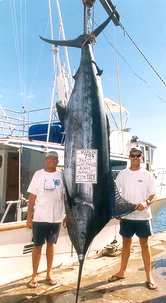 [November 21st] -- You know, this whole "stadium thing" that the Nationals are going through could be worse. A lot worse.
[November 21st] -- You know, this whole "stadium thing" that the Nationals are going through could be worse. A lot worse.
The Florida Marlins, whose problems with the city of Miami over a their new stadium makes ours pale by comparison, may be ready to trade away many of their star players in an attempt to restock the team for a pennant run if and when they either move the team or get their new park.
Team officials are trying to work out a trade that would send 3rd baseman Mike Lowell and pitcher Josh Beckett to the Texas Rangers for infielder Hank Blalock and a pitching prospect. The teams are still haggling over which prospect will be included in the deal [possibily John Danks], but it is expected that the deal will get done soon. UPDATE: It seems that the deal with the Rangers is dead. Several websites are reporting at 8:00pm that Lowell and Beckett are headed to the Red Sox for shortstop Henley Ramirez, pitcher Anibal Sanchez and a third minor leaguer. This is a surprising development -- Blalock is great player to build around and none of the players the Marlins will receive from the Sox have any significant major league experience.
With the exception of Dontrelle Willis and Miguel Cabrerra, pretty much the entire team is available. Unlike the post-World Series sell off of 1997, this time the team is attempting to restock the team with young talent and have a plan to return to respectibility quickly.
If Florida follows through on their plans, The Nationals will be helped in the short-term. With a depleted Marlins team in the National League East, Washington should be all but guaranteed of finishing out of the cellar and winning 4-5 more games in 2006 [assuming all else is equal]. The long-term picture isn't as clear; it all depends on how fast their new playes get to the major leagues, and how well they play once they get there.
Hopefully, the Nationals and Major League Baseball get their stadium deal done and move on. We don't want a Marlins sell-off here in Washington anytime soon.
New Stadium Design Starting To Take Shape
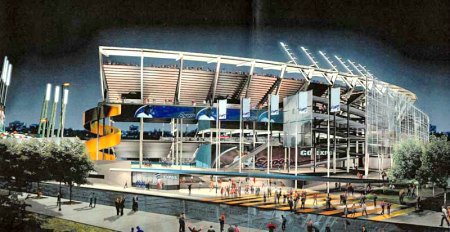 [November 20th] -- Still unsure as to how the Nationals' new ballpark is going to look? Read this article published in the Washington Post and you'll begin to get a pretty good idea as to what the architects at HOK and the folks on the D.C. City Council are thinking.
[November 20th] -- Still unsure as to how the Nationals' new ballpark is going to look? Read this article published in the Washington Post and you'll begin to get a pretty good idea as to what the architects at HOK and the folks on the D.C. City Council are thinking.
Basically, the stadium will be nothing like the wave of "retro" stadiums build since 1992.
- It will have a glass exterior instead of the brick facade that defines the retro parks.
- Fans inside of the park will be able to see the surrounding community from their seat while those on the "outside" will be able to catch a glimpse of what's happening on the field.
- It will have plenty of luxury suites and "upper crust" seating for all of the city's "swells."
- Ramps leading to the upper-deck will offer fans a view of the nearby river
- It's look will be thoroughly modern and will mesh well with the "glass and concrete" look of the myriad of governmental office buildings in the city.
Hmmm. Based on that description, you'd think that the above image would be HOK's architectural rendition of our new stadium. Oddly enough, this is the rendering of "LaBatt Park," a facility that was to have been built to keep the Expos from leaving Montreal and moving to another city.
Like Washington.
[Enter Twilight Zone soundtrack here]
Of course, our park won't look exactly like this, but the whole concept of "modern" and "open" and "glass walls" began on a drawing board in Quebec, a concept that was supposed to keep D.C. from needing a new park themselves. While I'm certainly happy that the Montreal deal fell through, I really do like the LaBatt Look
Ah, the circle of life. I guess the Lion King folks got it right.
New Togs For Nats Nation
 [November 19th] -- The team announced Saturday that the Nationals will have an alternate jersey for 2006; it will likely be used for Sunday home games and other "special occasions."
[November 19th] -- The team announced Saturday that the Nationals will have an alternate jersey for 2006; it will likely be used for Sunday home games and other "special occasions."
The new jersey is red and features the interlocking "DC" logo on the left breast. There will be a blue number with white piping on the lower right front of the jersey. The sleeves and neck are trimmed with deep blue piping. The left sleeve has a new Nationals logo patch, though it is similar to what the team featured last year. The new batting practice jersey is deep blue and has the same "DC" logo. T he team has added to the "bp" jersey a red line that connects the neck and sleeve openings. The numbers will be red with white piping.
he team has added to the "bp" jersey a red line that connects the neck and sleeve openings. The numbers will be red with white piping.
No major complaints from me regarding the design.
Oh, I think the logo could be a little larger, and I've never liked the contrast-color band under the sleeves on the bp jersey. Overall though, they're nice and generally match the conservative nature of the Nationals' uniform.
And [surprise!] they were available for purchase on the Nationals website the very moment the jersey's were introduced.
Marlon Anderson Signs With Nationals
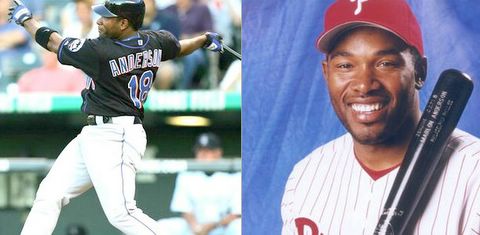 [November 18th] -- When you don't have the ownership and management team to sign players to help you win, all your left with are the players who can help you not to lose.
[November 18th] -- When you don't have the ownership and management team to sign players to help you win, all your left with are the players who can help you not to lose.
Meet Marlon Anderson.
Nationals general manager Jim Bowden announced Friday that the team has signed Marlon Anderson to a two year, $1.85 million dollar contract. Anderson comes to Washington from New York, where he was signed to a one year, $650,000 contract by Mets GM Omar Minaya. In 2005, Anderson batted .264 with 7 homers and 19 rbi's. He stole six bases in seven attempts.
Anderson is a versatile fielder, able to play first, second, third as well as the outfield. He is considered one of the very best pinch-hitters in the major leagues; Anderson tied for the league lead in pinch-hits in 2004, and his 35 pinch hits the last two years is best in the majors. Like most "average" major leaguers, Anderson can drive the fastball but can be fooled on a good breaking ball. He hits lefthanders as well as righties. His numbers are equal both at home and on the road. His .179 average with runners in scoring position concerns me, however. His defensive skills are best described as "adequate." He has the talent to turn ground balls into outs, but he often has trouble with his mechanics, which leads to more than his share of errors. Don't look for him to play a reserve role in the field; that will likely be Damian Jackson's job.
 Anderson will come off the bench and drive the ball. He'll do it often and he'll do it well. He was 18-56 (.321) as a pinch-hitter last season, with a homer and six rbi's. He has a career .308 average pinch hitting. The signing of Marlon Anderson effectively ends the career of Carlos Baerga and leaves Jamie Carroll's status in limbo. Carroll, a class act all the way, said that the signing of Anderson "helped the team," and didn't sound like a man worried about his job [though he of course is.]
Anderson will come off the bench and drive the ball. He'll do it often and he'll do it well. He was 18-56 (.321) as a pinch-hitter last season, with a homer and six rbi's. He has a career .308 average pinch hitting. The signing of Marlon Anderson effectively ends the career of Carlos Baerga and leaves Jamie Carroll's status in limbo. Carroll, a class act all the way, said that the signing of Anderson "helped the team," and didn't sound like a man worried about his job [though he of course is.]
Anderson says he chose the Nationals because they were the first team to show real interest in him. "They were there from the beginning, and showed a desire to have me on their team. I'm excited to be a part of the Nationals" said Anderson.
It looks more and more like Junior Spivey will be moved sometime before the start of spring training. With Brendan Harris showing at every level that he has nothing left to prove [offensively anway], I just don't see Carlos or Jamie coming back. The Nationals now have a logjam of bit players scattered across the diamond; perhaps Bowden is trying to bundle a bunch of them together and trade them for a power hitter or starting pitching.
The Nationals continue to bring it excellent "spare parts" but have not as of yet been able to address any significant free agent issue, either keeping their own or adding others to the team. Hopefully, that will come soon.
Answer: $59,259, Give Or Take A Penny Or Two
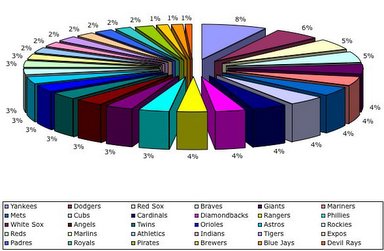 [November 18th] -- Frank Robinson sat in his office last August, deep in the bowels of RFK. He was stripped to the waist, tired but managed a smile. The Nationals had just won a game having given up six runs while committing several errors. Robinson looked up at the crowd of reporters and said, "It was ugly, but it was a win. A win is a win is a win."
[November 18th] -- Frank Robinson sat in his office last August, deep in the bowels of RFK. He was stripped to the waist, tired but managed a smile. The Nationals had just won a game having given up six runs while committing several errors. Robinson looked up at the crowd of reporters and said, "It was ugly, but it was a win. A win is a win is a win."
Well, yes. And no.
While each win, whether the result of a no-hitter or an error, counts the same in the 'w' column, the cost of each can vary greatly from team to team. Batting averages and earned run averages help gage a players ability, and the cost per win indicates how well a team's general manager is doing.
It's a simple process. Divide the total team payroll by the number of wins the team reaches. The Washington Nationals had a 2005 payroll of about $48 million; each of the team's 81 victories cost $59,259. The Nats, with their low payroll and high win total, had the lowest cost-per-win in the National League East, was third in the National League and ended the year sixth in the major leagues. Here are the rankings of the fifteen National League teams, ranked lowest to highest:
- Milwaukee Brewers $49,382
- Pittsburgh Pirates $56,914
- Washington Nationals $59,259
- Colorado Rockies $71,641
- Florida Marlins $72,289
- San Diego Padres $76,829
- Arizona Diamondbacks $81,818
- Cincinnati Reds $82,191
- Houston Astros $86,516
- St. Louis Cardinals $92,219
- Atlanta Braves $94,444
- Philadelphia Phillies 107,000
- Chicago Cubs $110,000
- San Francisco Giants $120,000
- New York Mets $125,000
There are some interesting "back stories" in these numbers. The four teams with the most expensive wins, the Phillies, Cubs, Giants and Mets, didn't make the playoffs. They averaged a combined 81 wins, the same number as the Nationals. The Nats payroll barely reached $48 million while the bottom dwellers averaged $94 million per team, almost twice the Nationals' payroll.
The four playoff teams, the Braves, Cardinals, Padres and Astros, had an average payroll of about $81 million, less than the Mets, Giants, Cubs, Phillies plus the Reds and the Diamondbacks.
There are two types of teams with low a low cost per win ratio. The Milwaukee Brewers, who like the Nationals also won 81 games, did it with a payroll almost eight million dollars less. This tends to happen when a team has several young stars blossom at once. Rickie Weeks, Prince Fielder and Bill Hall made a big difference in 2005. The Pittsburgh Pirates are a different story however. They're 67 victories came at a cost of only $38 million. They weren't trying to win, they were trying to survive. The Royals [$65,878] and Devil Rays [$56,679] fall into that "too cheap to care" category as well.
The Nationals' by far and away did the most with the least in the National League East. A Marlins victory was 22% more expensive than a Washington win. Braves wins were 60% more expensive, Phillies victories were 83% higher. A Mets victory was a whopping 110% more expensive than a Nats' win.
Throwing money at free agents is not the answer. The Mets have committed $23 million per year, almost half of Washington's entire payroll, to just two players, Carlos Beltran and Pedro Martinez. That got them 83 wins. GM Omar Minaya is now telling anyone who'll listen that he won't be outbid for Phillies' closer Billy Wagner. The Braves have committed 50% of their payroll to only three players, Mike Hampton, John Smoltz and Chipper Jones. These teams sign stars to outrageous salaries and then regret it a year or two later. The Phillies have Ryan Howard, National League Rookie-Of-The-Year and don't know where he'll play next season because Jim Thome is scheduled to return to first base following an injury. Both players can only play first base. Thome makes $14 million a year, greatly limiting the number of teams who can assume his salary [probably the Yankees, Red Sox and Angels].
That's just how free agency works.
The Nationals need to build from within, signing the occasional mid-level free agent to fill a hole when needed. The new owners don't want to be hamstrung by large free agent contracts like the Giants and Phillies currently are. The Milwaukee Brewers have a core of young talent that will keep them in contention for years to come. When a team signs a free- agent and their record is above .500, they lose their first round draft pick the next season. The Nationals are thin enough in their minor league system without having to give away next season's Ryan Zimmerman or Jay Bergman.
A payroll of $70 million dollars that fuels a 90 win season will cost the Nationals $75,000 per win, which would have ranked them 6th best in 2005. Those are workable numbers, both for the team and for we fans who must support their wages.
Now, let's hope that new ownership will build slowly, build from within and be careful with high priced free agents. It's the right way.
Former Hurricane QB Cut By Nationals
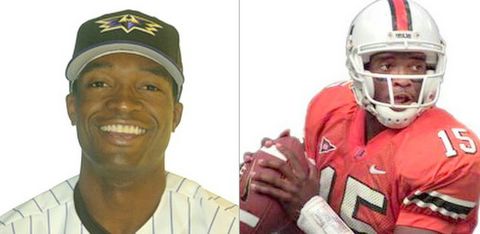 [November 17th] -- The Nationals released on Thursday outfielder Kenny Kelly, who was a mid-season waiver-wire pickup from the Cincinnati Reds. Kelly was another Reds-retread that Bowden had collected since becoming the Nationals general manager. Splitting time between the two teams, Kelly batted .308 in 13 major league at bats in 2005.
[November 17th] -- The Nationals released on Thursday outfielder Kenny Kelly, who was a mid-season waiver-wire pickup from the Cincinnati Reds. Kelly was another Reds-retread that Bowden had collected since becoming the Nationals general manager. Splitting time between the two teams, Kelly batted .308 in 13 major league at bats in 2005.
Kelly, a former second round draft pick of the Tampa Bay Devil Rays, was for a time both playing minor league baseball and starting for the University of Miami football team. Then head coach Butch Davis cornered Kelly prior to the start of his senior year and told him to choose: football or baseball. Kelly, citing the needs of his young family, left the Hurricanes and made baseball his career choice. He was quite stunned then when the Devil Rays sold him to the Mariners at the end of the 2000 season. It wasn't a matter of talent. With Tampa, it's always about money. The Devil Rays owed him a $1 million dollar payment before the start of the 2001 season, and they simply weren't willing to pay it. The Mariners were happy to and his contract was purchased by the Mariners in 2001. Kelly quickly became the team's top minor league prospect .
The M's were excited at their find. "This kid is going to come quick," manager Lou Piniella said. "With one full year in Triple-A, he could be ready. He's got a lot of the tools." It never happened. He was eventually picked up by the Reds, but it was five years before he had a chance to play at the major league level.
Said Kelly shortly after being sold to the Mariners, "If I'd known they were going to do that, maybe I would have continued to play football," Kelly said. "I thought they were committed to me being part of their future."
It's beginning to look like football might have been the way to go after all.
Burnett Dines With D.C. Brass, But Byrd Is The Word In Washington
 [November 16th] -- I guess that professional baseball teams are forced to do and say things for appearances sake. Team's will say and do things with absolutely no intentions of following through on them. One can only hope the Nats' dinner with pitcher A. J. Burnett falls into that category.
[November 16th] -- I guess that professional baseball teams are forced to do and say things for appearances sake. Team's will say and do things with absolutely no intentions of following through on them. One can only hope the Nats' dinner with pitcher A. J. Burnett falls into that category.
Reports have surfaced that the 28 year old free agent and his agent Darek Braunecker met with Nationals' officials at a posh Miami restaurant Wednesday night. General manager [for the moment] Jim Bowden, assistant general managers Bob Boone and Tony Siegle, Jose Rijo, a special assistant to the general manager, and interim farm director Andy Dunn met with Burnett.
The question is ... why?
Burnett has a career record of 49-50 with a 3.73 ERA. In 2005, the oft-injured right hander crafted a 12-12, 3.44 record. Burnett, whose clubhouse personality has 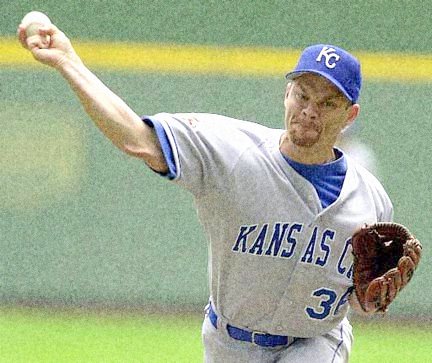 been questioned by many, is seeking, and will get, a 5 year, $50 million dollar contract. That's about 20% of the Nationals' current payroll.
been questioned by many, is seeking, and will get, a 5 year, $50 million dollar contract. That's about 20% of the Nationals' current payroll.
We'll have to assume that this is all just wishful thinking on the part of the Nationals, the kind of window shopping that most of us will do while walking through Neiman-Marcus at Christmas time. No, Burnett isn't the answer. Esteban Loiaza had a better year and would resign with the Nats for a fourth of what Burnett is asking. D.C. needs another good pitcher, not a [potentially] great one.
Enter Paul Byrd.
Byrd began his career with in the Braves system, and has made stops in New York, Philadelphia, Kansas City, Atlanta [a second time] and Los Angeles. He signed as a free agent with the Braves in 2003 but hurt his arm again, forcing him to miss the entire season. A rebound 2004 season earned him a contract with the Angels in 2005. He's done well along the way. He won 15 games with the Phillies in 1999, 16 with the Phillies/Royals in 2001, and 17 in 2002, again with Kansas City. He won 12 games with the Angels last year.
Byrd is seven years older than Burnett, but will come much cheaper. Burnett will earn somewhere in the $10 million/year range, while Byrd can be signed for roughly half that amount. With the money saved by signing Byrd, the Nats could then resign both Loiaza and Carrasco.  That would give the team a quality starting rotation without "breaking the bank." Livan - Patterson - Byrd - Lawrence and Carrasco; that's a pitching staff that could easily win 85 games, 90 if the Nats' position players stay healthy rebound in 2006.
That would give the team a quality starting rotation without "breaking the bank." Livan - Patterson - Byrd - Lawrence and Carrasco; that's a pitching staff that could easily win 85 games, 90 if the Nats' position players stay healthy rebound in 2006.
TSN, my favorite baseball site, says that Burnett "has worked very hard on his delivery. He has three main pitches that he throws quite effectively: a mid-90s fastball, change-up and a dizzying curve. His bat is proving to be a major asset as well. Command has been an issue with Burnett, but it is improving. His biggest flaw is pitching from the stretch, particularly with runners in scoring position.
He's a top of the rotation guy for years to come. Of Byrd, TSN says that "he dominates right-handed hitters with his repertoire of breaking stuff. A newfound screwball is a dominating pitch. Left-handed hitters demolish him and he has a very weak fastball that rarely reaches the high 80s. He's a steady middle of the rotation pitcher.
TSN, and the other scouting reports, say that Burnett is a "sky is the limit" kind of pitcher, whose blow-by fastball makes him almost unhittable. Byrd, on the other hand, is "nice" and "middle of the rotation" and "fills in well." He probably plays well with others too. What they don't indicate, however, is that Byrd has a much higher lifetime winning percentage than Burnett does, that he produces more with less.
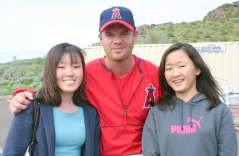 He's also great in the clubhouse. What's the point of having a superstar pitcher, and paying him a superstar salary if he doesn't pitch like a superstar?
He's also great in the clubhouse. What's the point of having a superstar pitcher, and paying him a superstar salary if he doesn't pitch like a superstar?
Nationals' fans aren't stupid enough to believe that a team that has no owner or reasonable hope of having one anytime soon, who doesn't even have a set payroll, has any real hopes of signing what Sports Illustrated says is the sixth best free agent in the 2005 market. But the signing of Paul Byrd is a realistic goal.
Forget Burnett.
At this point, I'm not sure that the team could even afford that dinner for seven at the Forge Restaurant at Miami little alone the signing of Burnett. I mean, doesn't the light bill take precedence??
With No Payroll, Leadership, Nats Beginning To Make Things Happen
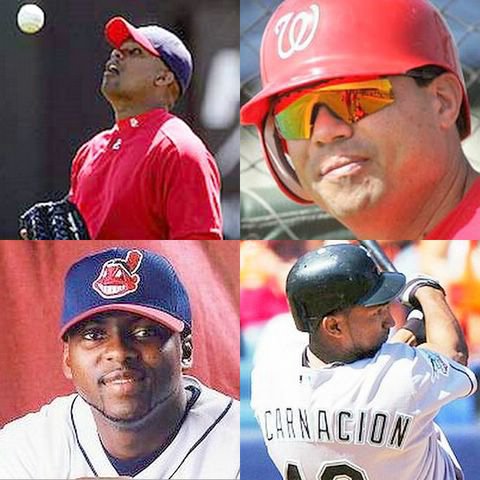 [November 16th] -- Finally! Some news about the Nationals that has nothing to do with Bud Selig or the D.C. City Council or the proposed municipal stadium.
[November 16th] -- Finally! Some news about the Nationals that has nothing to do with Bud Selig or the D.C. City Council or the proposed municipal stadium.
Jose Vidro's knee will require surgery after all. Team orthopedist Tim Kremchek recommended surgery last September, a move endorsed by both Jim Bowden and Frank Robinson. Vidro, however, sought out the advice of a second doctor, who suggested rest followed by a three week exercise regimen. Tests now show that Vidro's knee is still weak and surgery is no longer an option. The operation will be performed Wednesday morning, and Vidro is expected to be 100% when spring training begins in March. His knee has been bothering the heavy-set 2nd baseman for more than three years. Manager Frank Robinson was disappointed that Vidro reported to spring training overweight and out of shape this past season. Rumors have suggested that his extra weight may have caused Vidro's surgically repaired knee to give out in 2005.
Jose Guillen's 2005 numbers were down significantly due to a torn labrum in his shoulder. Guillen was injured in a game against the Blue Jays in June, and played hurt the rest of the year. Say what you want about the volatile right-fielder, he's a gamer. Said Guillen, "The shoulder is pretty damaged and I can hardly lift weights. It's not a big deal. It's going to take a few weeks to rehab the shoulder. I'm going to be ready for Spring Training."
A number of sources reported Monday that Dodgers outfielder Milton Bradley was being pursued by Nats' GM Jim Bowden. The report was backwards. The Dodgers contacted Jim Bowden and asked if the team would be interested trading for the mercurial 27 year old. "No thanks" was Bowden's reply. The main drawback to that potential trade would be the Nats outfield defense. No no, Bradley's every bit as good as Guillen in the field. The problem would be playing with only two outfielders, because who in their right mind would want to play between Milton Bradley and Jose Guillen???
Indications are that Bowden still covets former Marlin Juan Encarnacion. Encarnacion was "this close" to becoming a National last season. The Marlins traded him to D.C. for Zach Day in June, but the Nationals pitcher couldn't pass his physical. He was later traded to the Rockies for Preston Wilson. Encarnacion has never lived up to his great potential. Last year, he had one of his best seasons, batting .287-16-76. Bowden had him when both were with the Reds.
Reports continue to suggest that the Nationals have as a top priority the upgrading of the outfield. That is strange, because the outfield is the team's only real strength. Jose Guillen is a lock in right until he kills someone. Brad Wilkerson has quickly grown out of favor with Bowden and team management, but if Wilkerson is dealt, the team has to receive a speedy leadoff hitter in return. Encarnacion is neither speedy or a leadoff hitter. Ryan Church, though hurt, had a great year in 2005. If healthy, he could easily hit .300-20-90 in 2006. Encarnacion is certainly not better than Church. Behind them are Brandon Watson and Marlon Byrd. Encarnacion is nice, but the team needs a slugger, and we just can't afford one right now.
Gee, an entire story and not one mention of the sale of the team. How cool.
Selig Pushes Sale Back To January At The Earliest
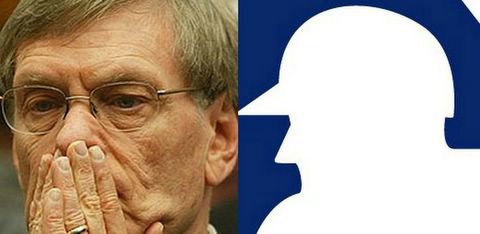 [November 15th] -- Just when I thought that Bud Selig and Major League Baseball could stoop no lower .....
[November 15th] -- Just when I thought that Bud Selig and Major League Baseball could stoop no lower .....
Selig announced Tuesday that the sale of the Nationals won't be finalized until January at the earliest. Why? He didn't say.
Hmmm ... let's think about this for a moment. Earlier today, the D.C. City Council announced that new stadium requirements made by baseball would cost an additional $20 million dollars. These upgrades were not part of the original agreement, and if baseball really wants them, they would have to pay for them. Baseball responded by pushing back the team's sale another two months. This has become a power struggle. The city council makes a demand and Selig pushes back the sale. The council learns their lessons and "asks" and then "suggests," and Selig pushes the sale back even further. The message is clear: don't mess with Bud Selig. The commissioner won't finalize the sale until the D.C. City Council capitulates completely on all fronts and at all forums.
For the past three weeks, major league teams were able to sign their own free-agents without having to try to match or beat offers from the other teams. Not the Nationals. Starting last Friday, the free agent signing period began, giving all major league teams the hope of improving themselves for 2006. All except the Nationals, of course. During the general manager's meeting this past week, every team began laying the foundations for upcoming trades that will take place over the next couple of months. Not the Nationals, however, as their general manager spent the better part of the week preparing for and then interviewing for his "dream job." Now comes the owner's meeting in Milwaukee this week. Washington won't be represented.
Selig's minions haven't even told Jim Bowden how much money he has to spend on players next season, not that is matters much anymore. Of all the transactions that involve players on the major league roster, 93% occur between the end of the season and February 1st. All of the other teams will head to spring training with their rosters virtually set. By then, the Nationals will have an owner, money to spend, and no players to acquire. If the team wants a speedy leadoff hitter, it's going to have to be Brandon Watson. The only 4th starter available will be a guy currently in the Nats' bullpen.
It's not the Nationals that Bud Selig is trying to hurt. It's the political structure in Washington. He is attempting to show the political world that baseball is too strong and he is too "bad" to be threatened any more. The city council had darn well better build the stadium to his specifications ... or else. Politicians had better not threaten to take baseball's anti-trust exemption away from them again ... or else. And the hardest part of all this is that he's not trying to hide his intentions. His excuses for postponing the sale have been so lame that no one believes them. He's taunting us; he is saying to us, "catch me if you can." All that there is left for us to do is to stop supporting the team. No problem. He'll simply take the $30 million in profits baseball earned last year and move the team somewhere else. No. He knows we'll never do that. After thirty-four years, we'd walk bare-footed on broken glass so that we could be first at the ticket window. The only person with the power to stop Bud's antics is those very people he's thumbing his nose at: Washington politicans.
Do they have the temerity to take him down? I doubt it.
Stadium Lease Discussions Could Get Ugly Tuesday
 [November 15th] -- A year ago, D.C. Mayor Anthony Williams announced that "Baseball is back in Washington!." A few weeks later, the city council began to poke a stick in the eye of Major League Baseball, and baseball in D.C. almost ended before it began.
[November 15th] -- A year ago, D.C. Mayor Anthony Williams announced that "Baseball is back in Washington!." A few weeks later, the city council began to poke a stick in the eye of Major League Baseball, and baseball in D.C. almost ended before it began.
That fight may seem like a lovefest compared to what is about to happen. City officials will ask major league baseball Tuesday for an additional $20 million dollars as well as a line of credit for another $24 million. Gee, that's going to go over well.
Baseball has repeatedly said that they are unwilling to become financially involved with the new stadium. A deal is a deal. They supplied the team, Washington supplies the stadium.
Since that agreement, however, MLB officials have continued to up the ante, asking for stadium upgrades at almost every level of discussions. The original agreement called for 1200 VIP parking spaces to be used by baseball officials and their friends. Now, baseball is demanding how those spaces should be built. They want them "near or adjacent" to the ball park. They are strongly hinting those spaces should be built underground. To build the parking lot the way that Bud wants will cost an additional $20 million dollars. It makes perfect sense that the cost be passed on to Major League Baseball. "We'll provide parking spaces, but if baseball wants them to be fancy, then they have to pay," said one city official, who spoke on condition of anonymity. "The city's position is the stadium will cost $535 million, and anything beyond that is contributed by the owner and/or baseball, or it just doesn't get done," D.C. Council member Jack Evans (D-Ward 2) said.
The $24 million line of credit sought by the city is what officials call "usual and customary." Wall Street types can get a little jittery in this post 9/11 world about revenue flows coming to a sudden stop. The line of credit simply assures that interest payments will be met in case of a terrorist attack, player strike or similar catastrophe. Agreements like this are found throughout the sporting world. They make investors happy. Happy investors mean lower interest rates. Lower interest rates mean a smaller repayment total. It's a win-win.
Major League Baseball, however, is not about "win-win." Rather, baseball is only concerned with dominating and destroying. By definition, a contract is an agreement where both parties receive something of value. Baseball, however, sees a contract as something that leaves the other side forever in a bent-over position.
Choosing a side in the MLB - D.C. City Council fight is kind of like picking a favorite during World War II when Adolph Hitler attacked Joseph Stalin. Neither side exactly tugs at the heart strings. That said, the city council is just stupid, while major league baseball is both stupid and conniving. Neither side deserves to win. In this one instance, when the D.C. City council wins, so do the fans. Nationals' fans shouldn't have to cover the $20 million dollar parking lot upgrade for Bud's drinking buddies. Nationals' fans shouldn't have to pay higher ticket prices to cover the increased interest rates because baseball isn't willing to spend three cents to cover the cost of a sheet of computer paper.
Sadly, this is all far from over. Baseball will probably threaten to move the team somewhere else if they don't get what they want from the city [baseball still owning the team certainly does have its advantages as the two sides argue, doesn't it?]. With baseball, its all about getting the most from others while giving up the least. Give the Expos owners $190 million for the team in 2002 and sell it for $450 million three years later. That's win-win? Bud Selig believes that cities and fans "owe" him for the honor of rooting for his teams. It looks like not having management in place in time for the free agent signing period will be the least of the Nationals worries this fall.
MEMO TO NATIONALS' FANS: Stand on wood floors. Otherwise, Bud Selig will pull the rug out from under you faster than he can charge your credit card.
RFK: A Diamond In The Rough
 [November 14th] -- Bud Selig wanted to make sure that there was no misunderstanding. A caller from Falls Church asked Selig, who was a guest on XM's MLB Homeplate program, "Commissioner, you could have moved the Expos to Norfolk, or Portland, or New Orleans, or any other city that doesn't have a baseball team. Why did you choose Washington? Did you feel guilty that we've lost two teams and you were trying to make things right?" There was a pause, then Selig replied, "We moved the Expos to Washington because D.C. had a stadium that was close to being major-league ready. None of the other cities had that."
[November 14th] -- Bud Selig wanted to make sure that there was no misunderstanding. A caller from Falls Church asked Selig, who was a guest on XM's MLB Homeplate program, "Commissioner, you could have moved the Expos to Norfolk, or Portland, or New Orleans, or any other city that doesn't have a baseball team. Why did you choose Washington? Did you feel guilty that we've lost two teams and you were trying to make things right?" There was a pause, then Selig replied, "We moved the Expos to Washington because D.C. had a stadium that was close to being major-league ready. None of the other cities had that."
Next question!
We owe a deep debt of thanks to RFK for bringing baseball back to town. Since opening day, however, it's been called "dilapidated," "decrepit" and "unworthy" to host major league baseball games.  True, it wasn't in the best of shape, but the $18 million dollar face lift it received made it "adequate" to its detractors, and a "great place to watch a game" for we baseball purists. Today, RFK Stadium is nothing more than a stop-gap, a place to play until the next greatest park is built, but when it first opened its doors, it was the most high-tech, state-of-the-art stadium in the United States.
True, it wasn't in the best of shape, but the $18 million dollar face lift it received made it "adequate" to its detractors, and a "great place to watch a game" for we baseball purists. Today, RFK Stadium is nothing more than a stop-gap, a place to play until the next greatest park is built, but when it first opened its doors, it was the most high-tech, state-of-the-art stadium in the United States.
Griffith Stadium was one of the first steel and concrete baseball stadiums ever built. It replaced American League Park, a wooden structure that was at the time only three years old. By the 1950's, haphazard expansions and the Griffith family's tight-fisted nature made Griffith Stadium an eye-sore and a terrible place to watch a game. Congress began to consider the possibility of building a new, modern, dual purpose facility for the city, the first stadium specifically designed for two sports. Everyone loved the idea. Everyone except Calvin Griffith that is. The Griffiths owned both the Washington Senators and Griffith Stadium, and received a very nice income from the rent and concession and parking revenues generated from the Washington Redsk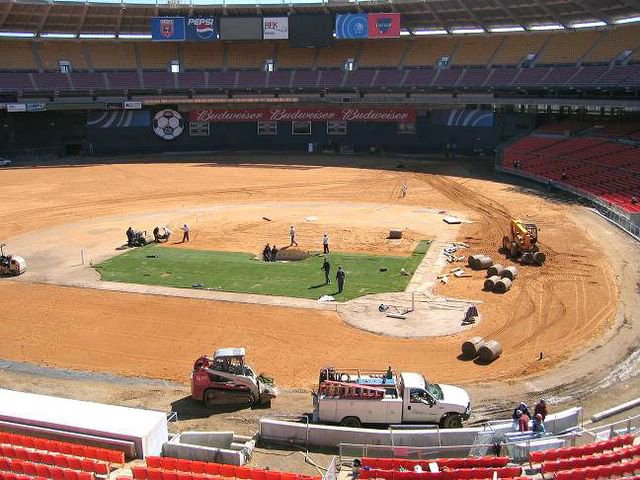 ins as well as other events. By playing in a new city owned stadium, Griffith would not only lose revenues but would also have to start paying rent, something the team had never had to do. Griffith asked for, and received permission to move the team just a few months after construction began on what would eventually become known as "D.C. Stadium." Upon hearing that news, Congress immediately threatened baseball with the removal of their anti-trust exemption and, almost immediately, the city of Washington was granted an expansion team to play in the new stadium.
ins as well as other events. By playing in a new city owned stadium, Griffith would not only lose revenues but would also have to start paying rent, something the team had never had to do. Griffith asked for, and received permission to move the team just a few months after construction began on what would eventually become known as "D.C. Stadium." Upon hearing that news, Congress immediately threatened baseball with the removal of their anti-trust exemption and, almost immediately, the city of Washington was granted an expansion team to play in the new stadium.
City officials wanted the new stadium to be "first class all the way," and engaged Osborn Engineering to build the structure. Osborn was the "HOK" of their day, having designed and built both Fenway Park and Yankee Stadium. City officials stressed that they didn't want an urban, quirky stadium with an unusual footprint.
 Washington was a city of symmetry, and Osborn was given the task of coming up with something that mirrored Washington's uniqueness.
Washington was a city of symmetry, and Osborn was given the task of coming up with something that mirrored Washington's uniqueness.
Congress gave the Washington Fine Arts Commission final authority in all construction and design decisions. The commission was created in 1910, and charged with "meeting the growing need for a permanent body to advise the government on matters pertaining to the arts; and particularly, to guide the architectural development of Washington." Fountains, statues, monuments and memorials were all under the pervue of the commission. The height and size of buildings were strictly regulated. The commission looked at the new stadium as but another federal building in need of its guidance. It became a nightmare. Osborn would deliver designs to the commission who would then change much of what the architects had envisioned. The original light towers, for example, were "red lined" because they interfered with sightlines from the roof. By the time construction began, in July, 1960, the two sides were barely talking. Fifteen months later, the stadium was complete and ready for use.
D.C. Stadium was like no other facility when it opened. Unlike the other baseball parks, which were all built before there was a National Football League, D.C. Stadium was built with the Redskins in mind. The third base stands were built on a roller system which allowed the stands to be moved into centerfield for football games, lining both sides of the football field with high priced seats. There were broadcast booths for both sports, behind home plate for baseball and at the fifty yard line for football. The light banks were designed to illuminate both fields independently. In 1963, the $400,000 scoreboard was installed behind the right field fence.
D.C. Stadium remained unchanged throughout the 1960's.
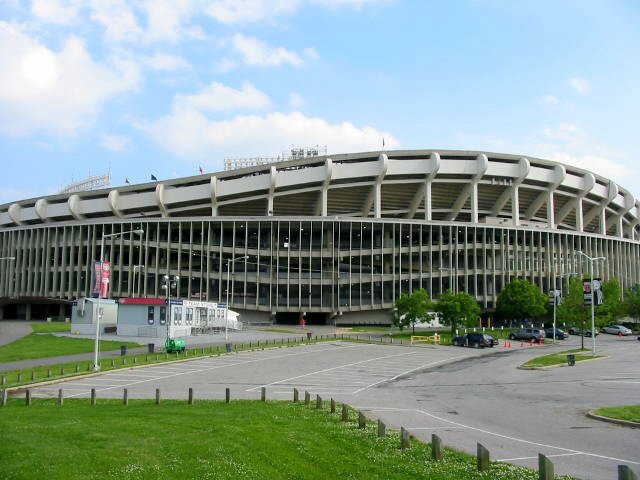 The name was changed to R.F.K. Memorial Stadium after the Senator from New York was assassinated in 1968. In 1970, Vince Lombardi, new head coach of the Redskins, asked the D.C. Armory Board, managers of the stadium, to replace the grass field with astro-turf. They approved the request, but Senators' owner Bob Short refused, citing cost as the reason. The Senators left following the 1971 season, leaving the stadium to the Redskins. Over the next fifteen years, the stadium was kept clean, but little was done to keep the facility up to date. The "movable" stands rusted in place. A new scoreboard was installed in the right field upper deck, but was very plain when compared to the other NFL stadiums. When the Redskins left in 1997 for their new facility in suburban Maryland, D.C. United became the prime tenant. The city, and the soccer team, were unwilling, perhaps even unable, to invest any money into repairs and renovations for the now thirty-six year old stadium.
The name was changed to R.F.K. Memorial Stadium after the Senator from New York was assassinated in 1968. In 1970, Vince Lombardi, new head coach of the Redskins, asked the D.C. Armory Board, managers of the stadium, to replace the grass field with astro-turf. They approved the request, but Senators' owner Bob Short refused, citing cost as the reason. The Senators left following the 1971 season, leaving the stadium to the Redskins. Over the next fifteen years, the stadium was kept clean, but little was done to keep the facility up to date. The "movable" stands rusted in place. A new scoreboard was installed in the right field upper deck, but was very plain when compared to the other NFL stadiums. When the Redskins left in 1997 for their new facility in suburban Maryland, D.C. United became the prime tenant. The city, and the soccer team, were unwilling, perhaps even unable, to invest any money into repairs and renovations for the now thirty-six year old stadium.
R.F.K. Stadium cost $20 million dollars to build in 1961. The city of Washington sank $19 million into the facility earlier this year just to bring it up to code to placate the fire marshal as well as making it "good enough" for Bud Selig and major league baseball.
Just "good enough?" RFK was so good that cities all across the country copied the stadium's design. Atlanta, St. Louis, Pittsburgh, Cincinnati and Philadelphia built carbon copy facilities, and New York, San Diego and Houston created stadiums based on RFK's design.
 So many cities copied RFK that the term "cookie cutter" became synonymous with RFK's circular symmetry and clean lines. Now, all those parks are either gone or are on their way out, and cookie cutter refers to all of the new, "old" look parks that have been built in the last decade.
So many cities copied RFK that the term "cookie cutter" became synonymous with RFK's circular symmetry and clean lines. Now, all those parks are either gone or are on their way out, and cookie cutter refers to all of the new, "old" look parks that have been built in the last decade.
RFK was the best of the circular stadiums. It wasn't patterned after anything else. It was unique. It was special. It was one of a kind. Just like the city it represents. I'll miss it when the Nationals move on.
Nationals Hamstrung By Loss Of Terrmel Sledge In 2005
 [November 14th] -- Terrmel Sledge could have made such a difference for the Nationals in 2005. Coming off a superb rookie year, manager Frank Robinson had him in the opening day lineup with every intention of his remaining there all year.
[November 14th] -- Terrmel Sledge could have made such a difference for the Nationals in 2005. Coming off a superb rookie year, manager Frank Robinson had him in the opening day lineup with every intention of his remaining there all year.
It didn't happen.
Sledge tore his hamstring while running across Dodger Stadium's outfield grass trying to track down a ball hit into the gap. It was initially thought that surgery wouldn't be necessary, but doctors had been overly optimistic in that regard. Within a month, he had both his hamstring as well as his non-throwing shoulder repaired, side-lining him for the rest of the year. Although Sledge is expected to rejoin the Nationals fully recovered, he more than likely won't be available until after the beginning of the 2006 season.
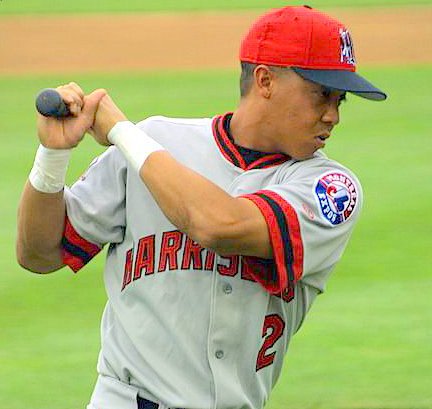 Nationals manager Frank Robinson says that Terrmel Sledge is a "throwback" player, someone more likely to be part of Joe DiMaggio's generation than Milton Bradley's. "I love the way the kid deals with adversity," began the hall of fame manager. "He's a very special person. He is one of the very few players today that is a student of the game. He listens. He seeks advice. He observes and makes adjustments. That just doesn't happen much anymore." Tommy John echoed Robinson's sentiments. "He's one of the organizations bright young players" John said in 2003. "He's as heady and determined as as any player you're likely to find on the diamond today." Sledge graduated from Long Beach State in 1999, and was drafted by the Seattle Mariners in the 8th round of the amateur draft. He was traded to the Expos/Nationals the following year for catcher Chris Widger. He spent the next five years rising slowly through the team's minor league system, arriving in Montreal in 2004 with a career .308 battomg average. After starting the 2004 season 1 - 36, Sledge batted .285 the rest of the way, finishing the year .269-15-62 . He was batting .248 for the Nationals this season when he was lost for the year.
Nationals manager Frank Robinson says that Terrmel Sledge is a "throwback" player, someone more likely to be part of Joe DiMaggio's generation than Milton Bradley's. "I love the way the kid deals with adversity," began the hall of fame manager. "He's a very special person. He is one of the very few players today that is a student of the game. He listens. He seeks advice. He observes and makes adjustments. That just doesn't happen much anymore." Tommy John echoed Robinson's sentiments. "He's one of the organizations bright young players" John said in 2003. "He's as heady and determined as as any player you're likely to find on the diamond today." Sledge graduated from Long Beach State in 1999, and was drafted by the Seattle Mariners in the 8th round of the amateur draft. He was traded to the Expos/Nationals the following year for catcher Chris Widger. He spent the next five years rising slowly through the team's minor league system, arriving in Montreal in 2004 with a career .308 battomg average. After starting the 2004 season 1 - 36, Sledge batted .285 the rest of the way, finishing the year .269-15-62 . He was batting .248 for the Nationals this season when he was lost for the year.
Sledge understands his limitations. "I'm not a big guy"he told ESPN, "but I have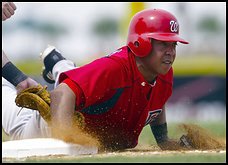 a little sock in me. I'm more of a doubles guy, but I do have enough power to hit a few out of the park when I need to." He is a contact hitter who seldom strikes out. Sledge has a career 6.6 at-bat per strikeout mark. Compare that to Brad Wilkerson, who strikes out once per 3.8 at bats. Sledge is "quick" but not fast. He's not going to steal bases but neither will he be a hindrance on the base paths. His arm is average but he's adept at positioning himself to compensate for that deficiency.
a little sock in me. I'm more of a doubles guy, but I do have enough power to hit a few out of the park when I need to." He is a contact hitter who seldom strikes out. Sledge has a career 6.6 at-bat per strikeout mark. Compare that to Brad Wilkerson, who strikes out once per 3.8 at bats. Sledge is "quick" but not fast. He's not going to steal bases but neither will he be a hindrance on the base paths. His arm is average but he's adept at positioning himself to compensate for that deficiency.
Assuming a 500 at-bat season in the big leagues, his numbers would look like this based on past history: at-bats: 500 -- runs:60 -- hits: 135 -- 2b:25 -- 3b:10 -- hr:21 -- rbi:87 -- ave:.267 -- OBP:.340 -- SLG:.455
Sledge is at his best when he drives the ball between the gaps. When he tries to pull the ball, however, he ends up going 1-36 like he did to begin the 2004 season. He hits best with runners in scoring position. Mo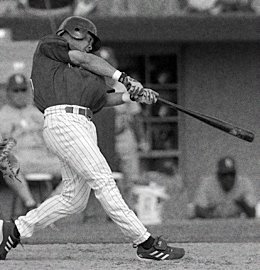 st scouts believe Sledge is most valuable as a 4th outfielder.
st scouts believe Sledge is most valuable as a 4th outfielder.
The hamstring injury still concerns many within the Nationals organization. Team general manager Jim Bowden remembers how a hamstring injury sidetracked Ken Griffey for more than three years. "I couldn't sleep the night Terrmel was hurt" said Bowden. "I prayed all night for him. It's the worse hamstring injury I have ever seen, and that includes the one that took Ken Griffey down when I was still with the Reds."
If he returns to form, he will push Ryan Church for one of the team's outfield positions. He and Church mirror each other's ability and talent. Playing full time, both can produce .280-20-80 type seasons. Both are lefties. If Sledge is able to play every day, one of them needs to be traded for pitching. Although I like Church's ability, I love Sledge's makeup and maturity. He's 29 and can assume a position of team leadership. He reminds me of Ken Griffey Sr. Griffey played in the 1970's and 1980's with the Reds and Yankees. Like Griffey, Sledge's intelligence and desire dwarfs his ability. Having Ken Griffey Sr. on the team was like having a second manager on the team.
Every team needs a player like that. Few teams do. The Nationals have one. His name is Terrmel Sledge.
Huppert Likely Moving On Due To D.C. Uncertainty
 [November 13th] -- It looks as though third base coach Dave Huppert will become the first casualty of Major League Baseball's policy of willful and wanton neglect towards the Washington Nationals. He is ready to accept a managerial position with the Philadelphia Phillies class 'A' minor league team at Lakewood New Jersey.
[November 13th] -- It looks as though third base coach Dave Huppert will become the first casualty of Major League Baseball's policy of willful and wanton neglect towards the Washington Nationals. He is ready to accept a managerial position with the Philadelphia Phillies class 'A' minor league team at Lakewood New Jersey.
Huppert's position with the Nationals was tenuous before the events of the past month. General manager Jim Bowden felt that the 3rd base coach wasn't aggressive enough with base runners, but Huppert disagrees. "I could have been more aggressive, but not much more," said the 48 year old, adding, "I don't think we had the speed. We hit poorly  as a team and I didn't want to give up many opportunities. I only had seven guys thrown out at the plate for the year -- and the ones I held up, only 14 of them didn't score. I did as good a job as I could do. We didn't get a lot of big hits." Manager Frank Robinson disagreed with his boss. "Dave Huppert had to familiarize himself with the players on our ballclub -- know their strengths and weaknesses as far as running the bases," Robinson said. "He had to get to know every defensive player on the other ballclubs. ... That takes time, and I can't emphasize that enough.
as a team and I didn't want to give up many opportunities. I only had seven guys thrown out at the plate for the year -- and the ones I held up, only 14 of them didn't score. I did as good a job as I could do. We didn't get a lot of big hits." Manager Frank Robinson disagreed with his boss. "Dave Huppert had to familiarize himself with the players on our ballclub -- know their strengths and weaknesses as far as running the bases," Robinson said. "He had to get to know every defensive player on the other ballclubs. ... That takes time, and I can't emphasize that enough.
Huppert might not have returned in 2006, but the fiercely loyal Robinson would likely have fought to keep him on the staff over the objections of Bowden. But we'll never know. Bud Selig indirectly made the decision, and not the Nationals management.
Huppert, Randy St. Claire, Tommy McCraw and Don Buford must act in the best interest of their families, which means turning their backs on the uncertainty in D.C. for positions elsewhere in baseball.
We learned in grade school what happens when the first domino in a line falls. It's just a matter of time before the Nationals becomes a team with no one in charge. Anywhere.








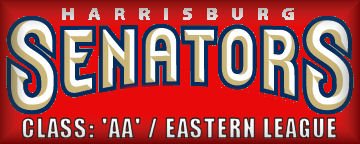
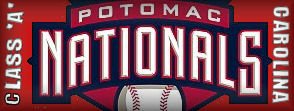

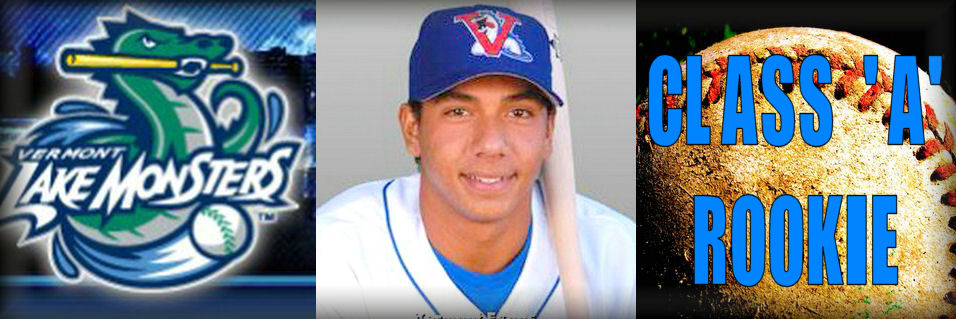











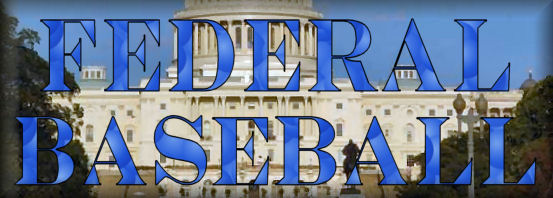



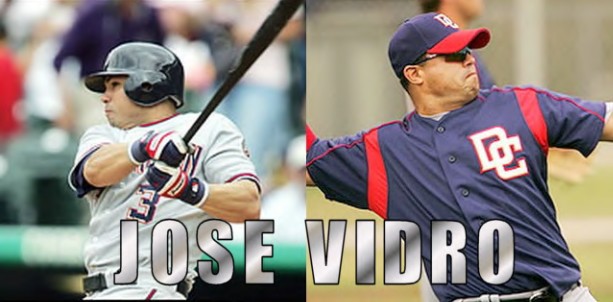




















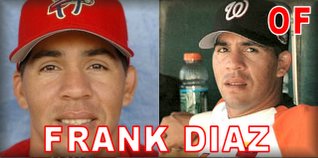

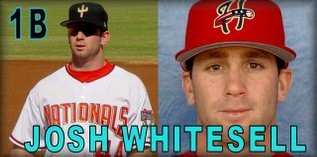
 3) 1926 (road) --- 4) 1936-'37, 1948-'51
3) 1926 (road) --- 4) 1936-'37, 1948-'51 3) 1968 - '71, and 2005 (home) --- 4) 2005 (road)
3) 1968 - '71, and 2005 (home) --- 4) 2005 (road) Buddy Meyer --- Walter Johnson
Buddy Meyer --- Walter Johnson Ed Yost --- Muddy Ruel
Ed Yost --- Muddy Ruel Roger Peckinpaugh --- Joe Cronin
Roger Peckinpaugh --- Joe Cronin Del Unser --- Darold Knowles
Del Unser --- Darold Knowles Ed Stroud - Mike Epstein
Ed Stroud - Mike Epstein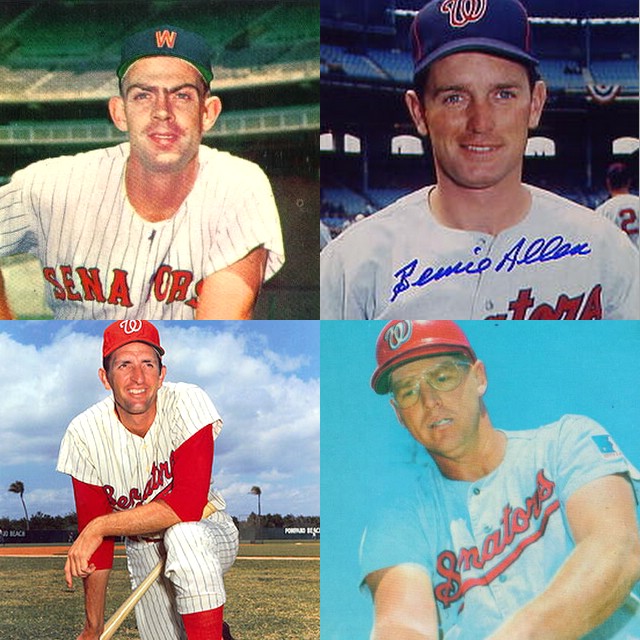 3)1968 -- 4)1969 - 1971
3)1968 -- 4)1969 - 1971